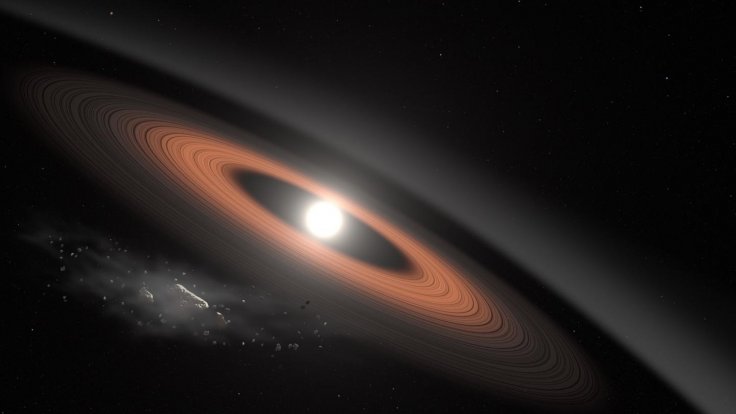
Many scientists across the world believe that a gigantic space body dubbed 'Planet Nine' is lurking in the edges of the solar system and they speculate that it is responsible for the weird orbits of trans-Neptunian objects. Now, a German citizen scientist named Melina Thévenot has discovered something extraordinary during her search for the alleged Planet Nine.
She found a 3-billion-year-old dwarf star that has dust rings circling it, very similar to the dust rings around Saturn.
Melina made this discovery while working on a project headed by NASA named 'Backyard Worlds: Planet 9 project'. Researchers at NASA have now named the star 'LSPM J0207+3331 or J020 7', and initially, experts have speculated that it was a cold brown dwarf.
"This object was found by Melina Thévenot of Germany using the Backyard Worlds project. She originally thought it might be a cold brown dwarf, something the project is very interested in and has had a lot of success finding. When Melina investigated further, she found that although the object had significant infrared brightness; it was not a nearby brown dwarf. The team looked at it together, and we determined it was likely a white dwarf with infrared excess," said Marc Kuchner, an astrophysicist at NASA's Goddard Space Flight Center in a statement.
The study report which is now published in Astrophysical Journal Letters revealed that these rings are most likely made up of warm dust. However, the rings continue to perplex space experts considering the age and cold temperature of the star.
"Curiously, the mid-infrared photometry of the disk cannot be fully explained by a geometrically thin, optically thick dust disk as seen for other dusty white dwarfs, but requires a second ring of dust near the white dwarf's Roche radius," wrote the researchers in the study's abstract.
Experts believe that more studies should be conducted using NASA's James Webb telescope to determine what exactly the ring is comprised of.









